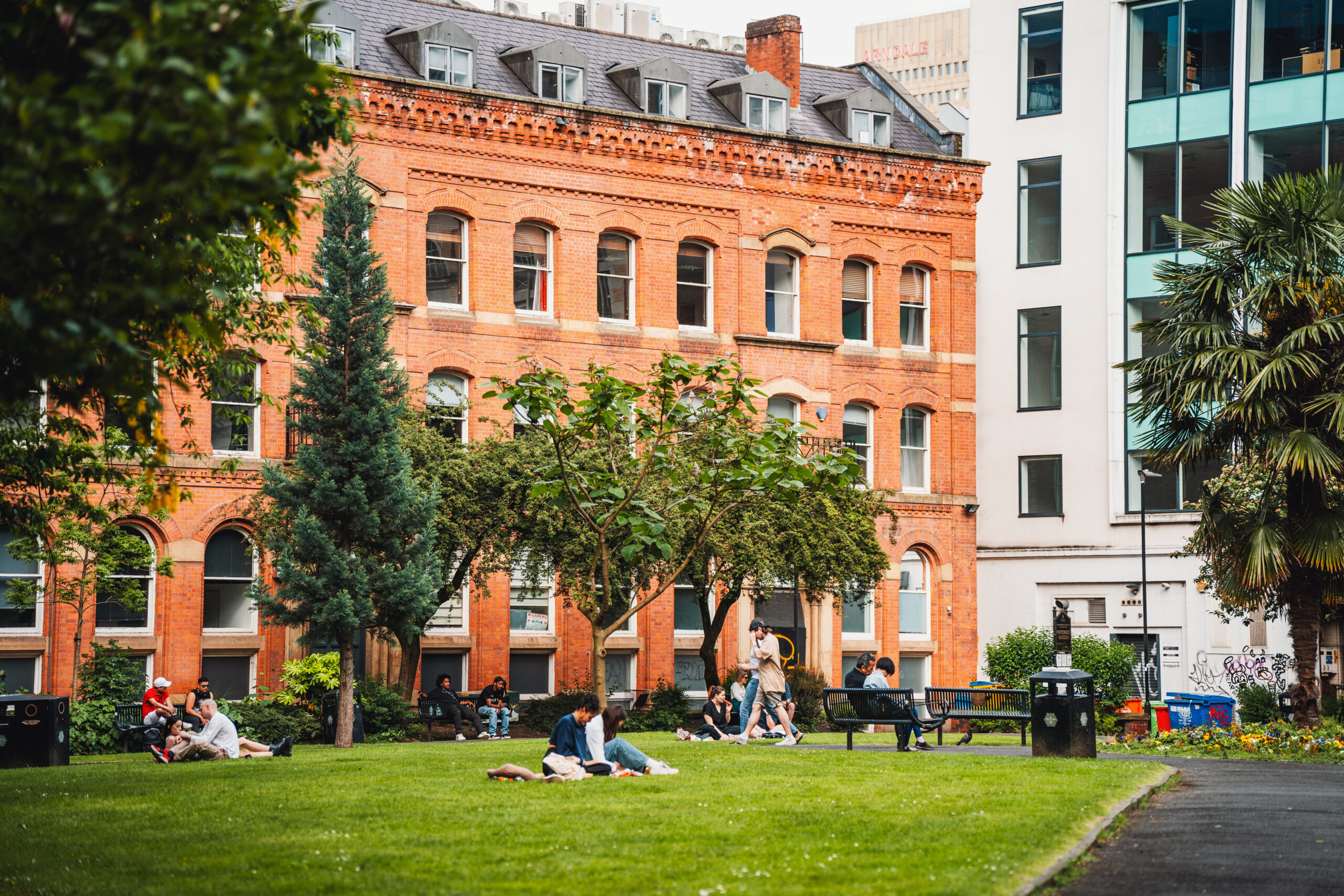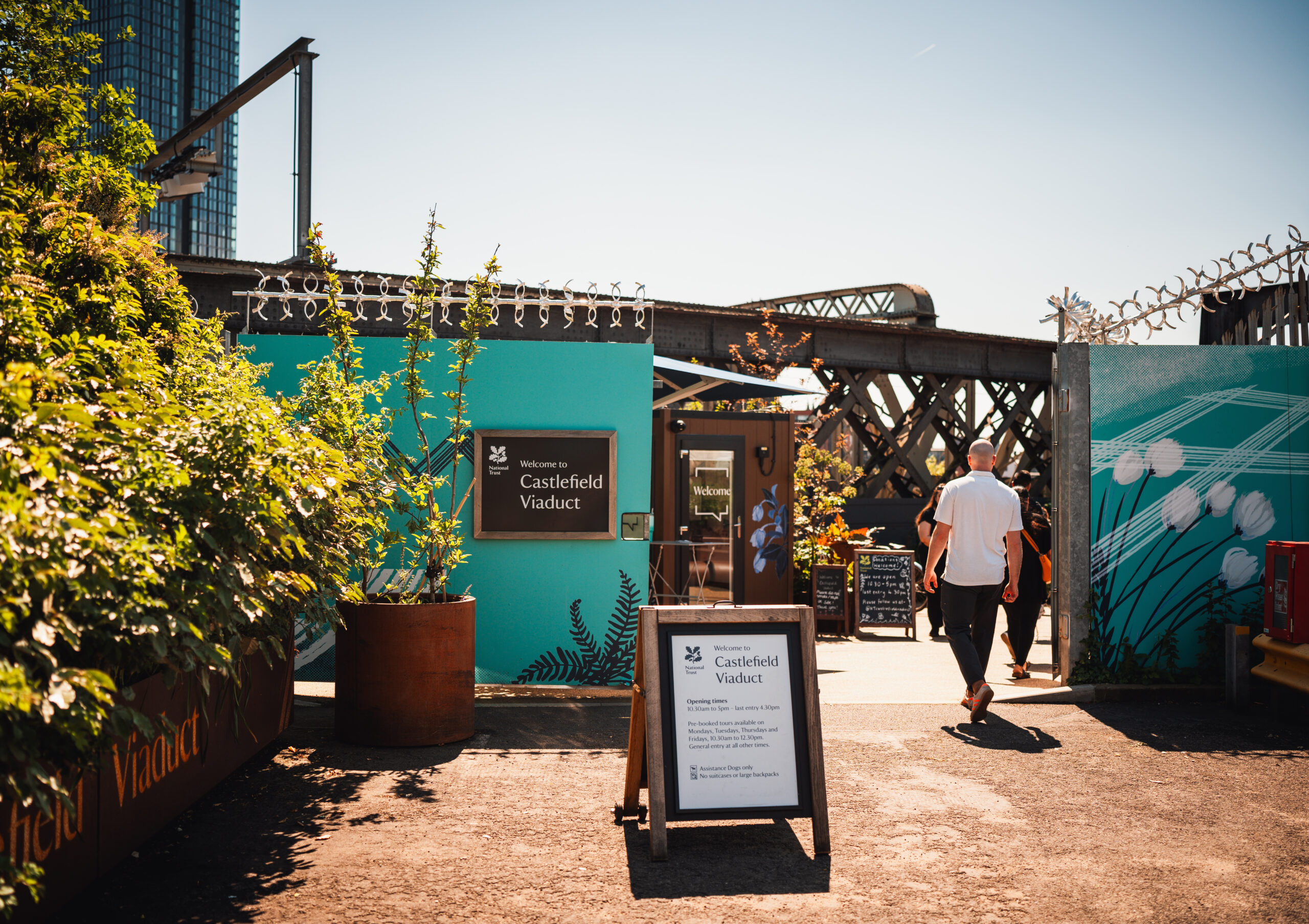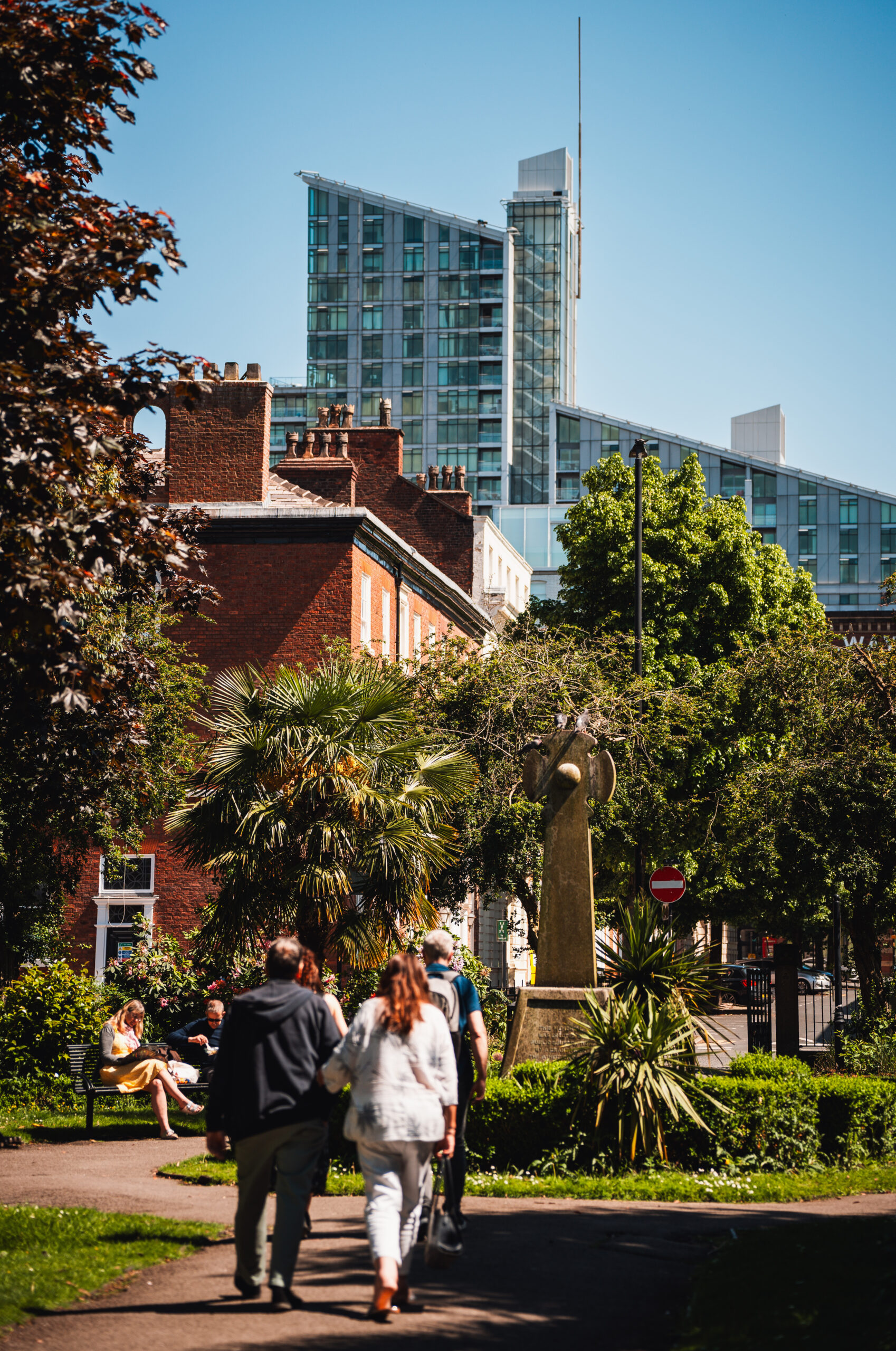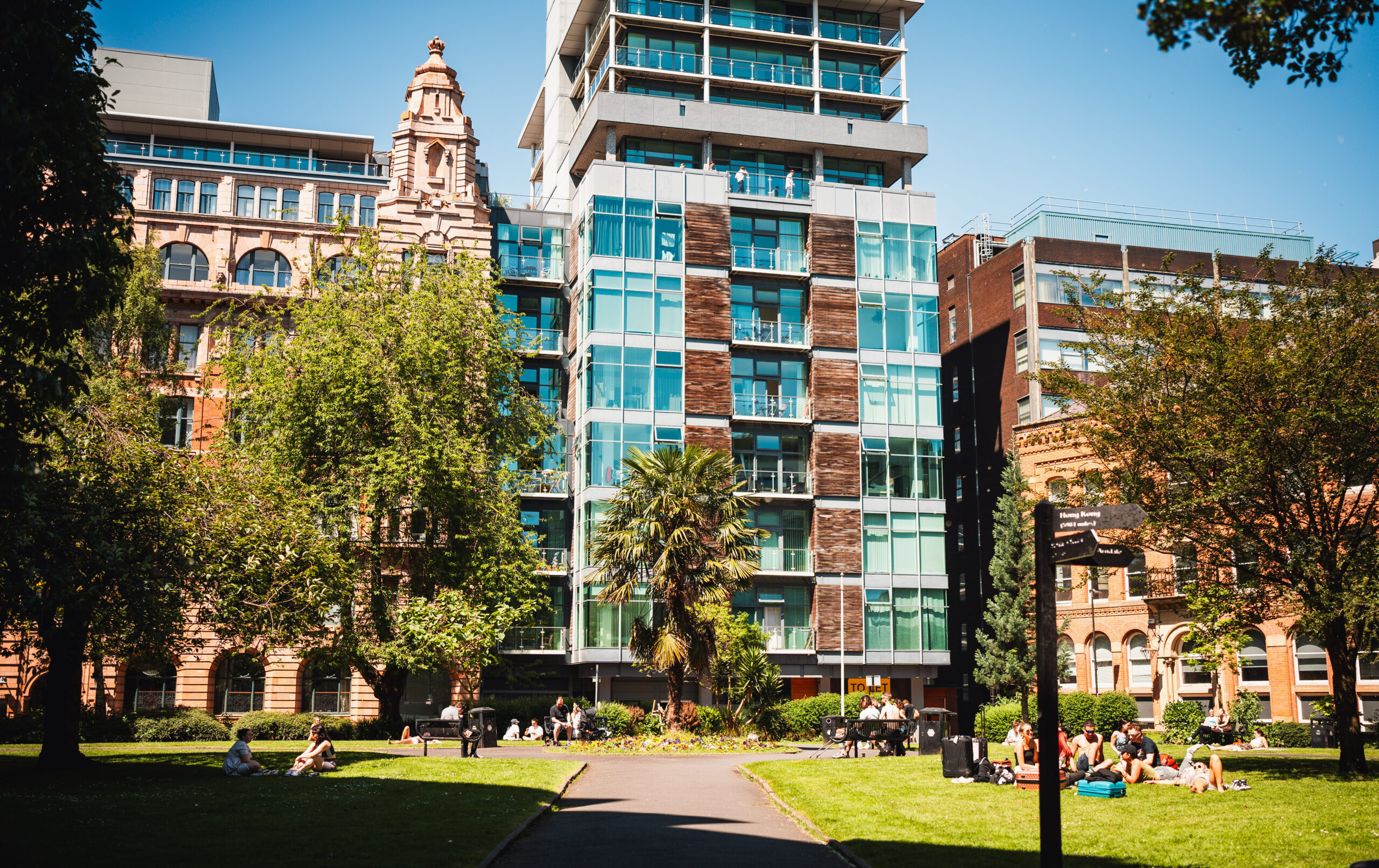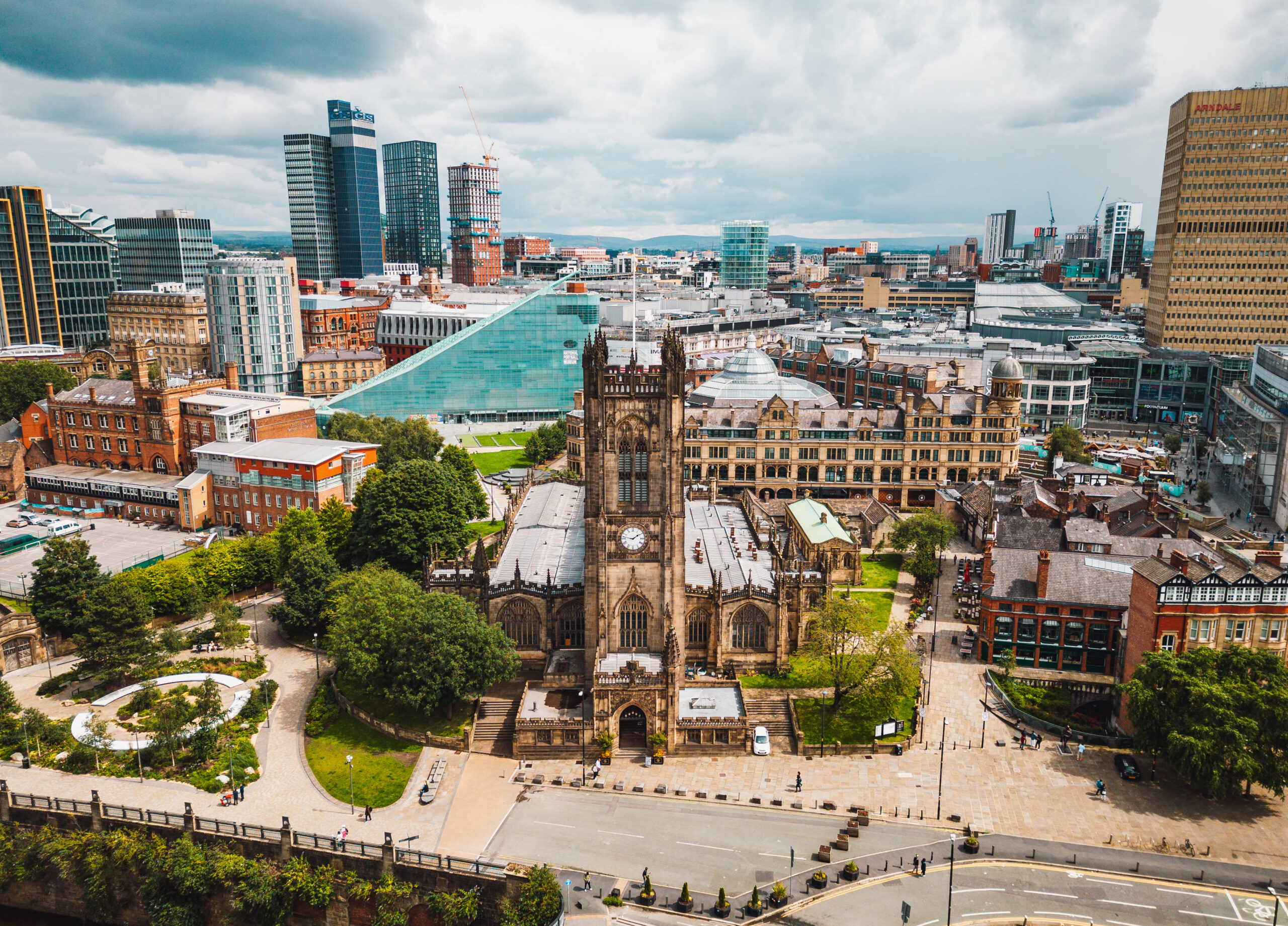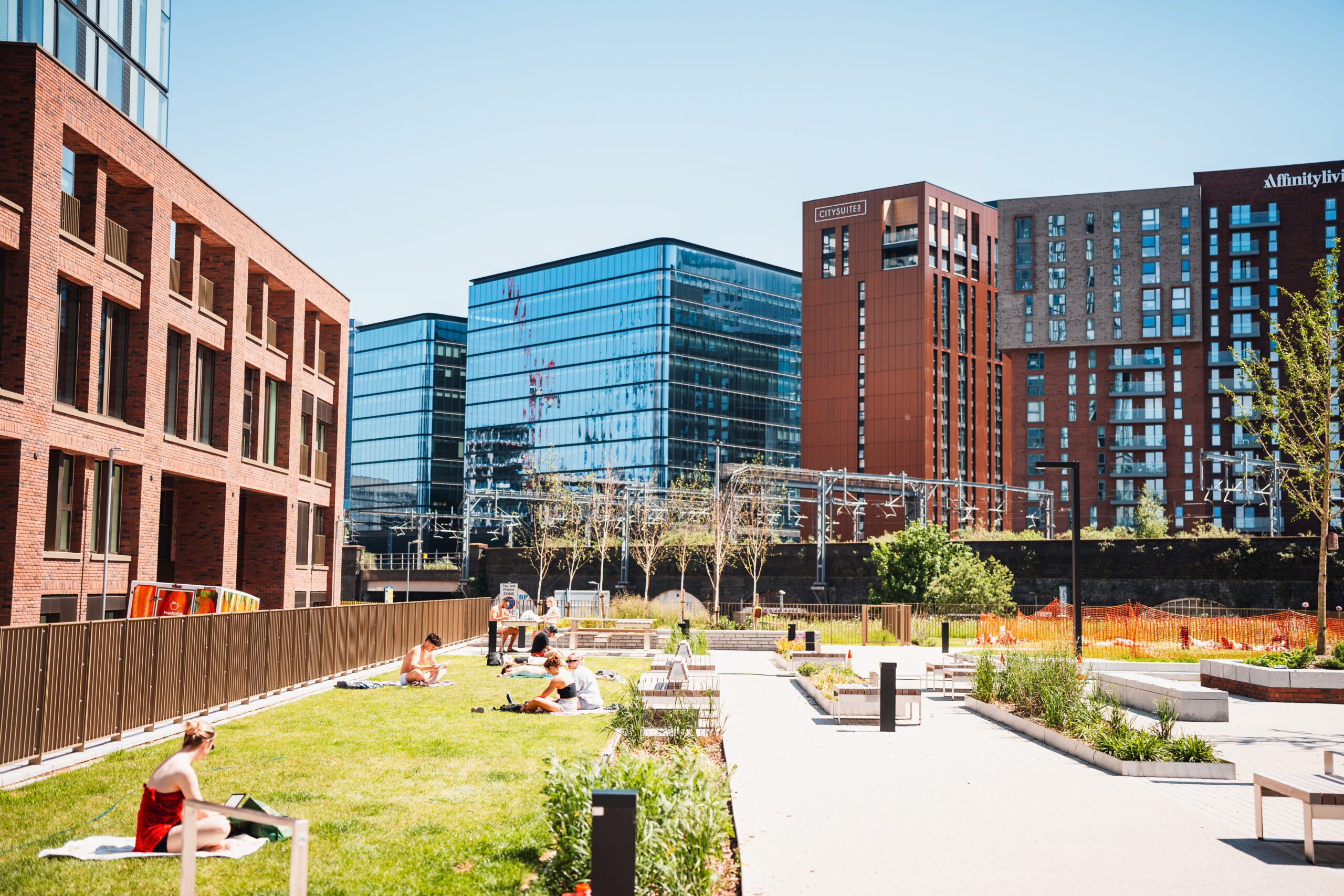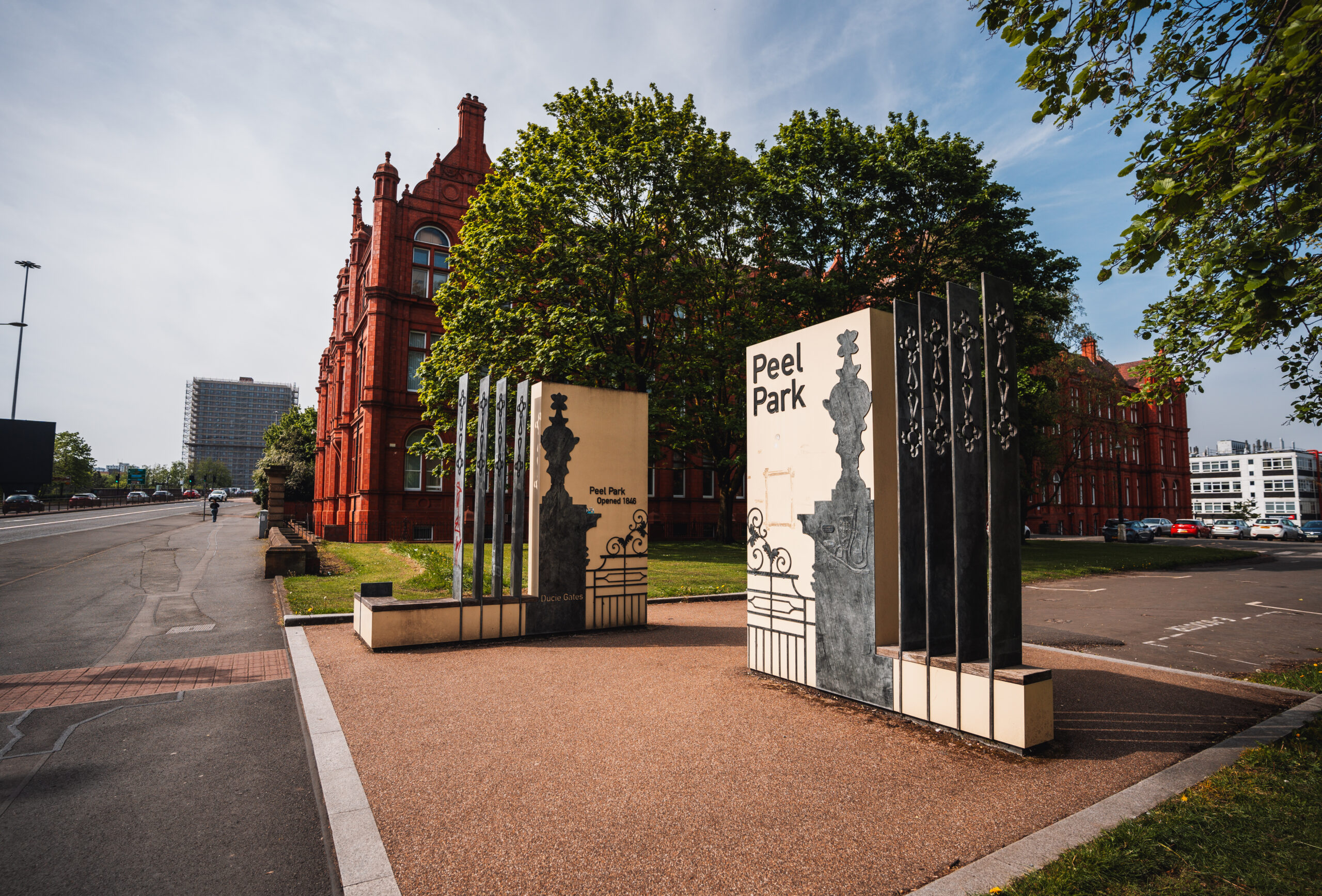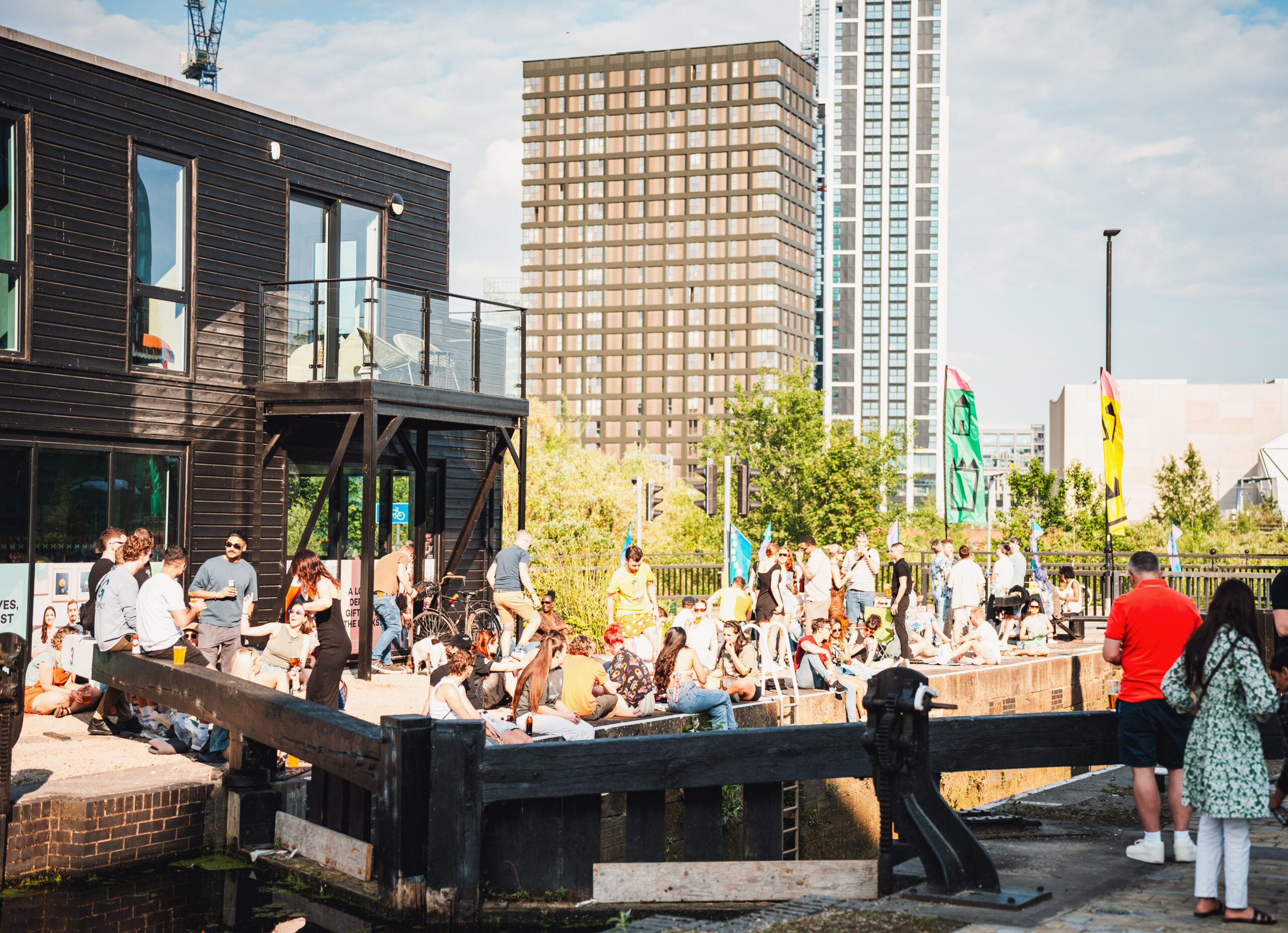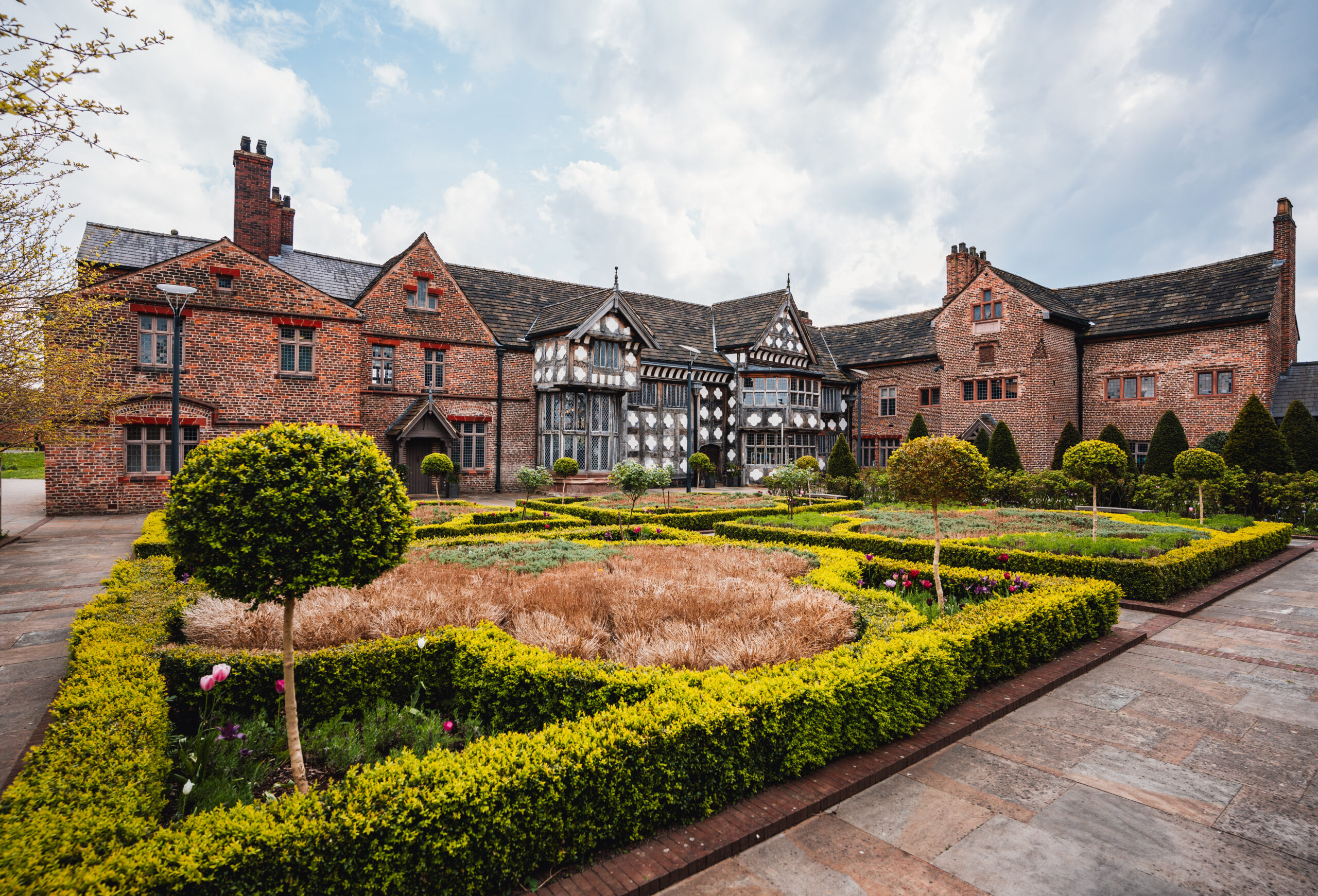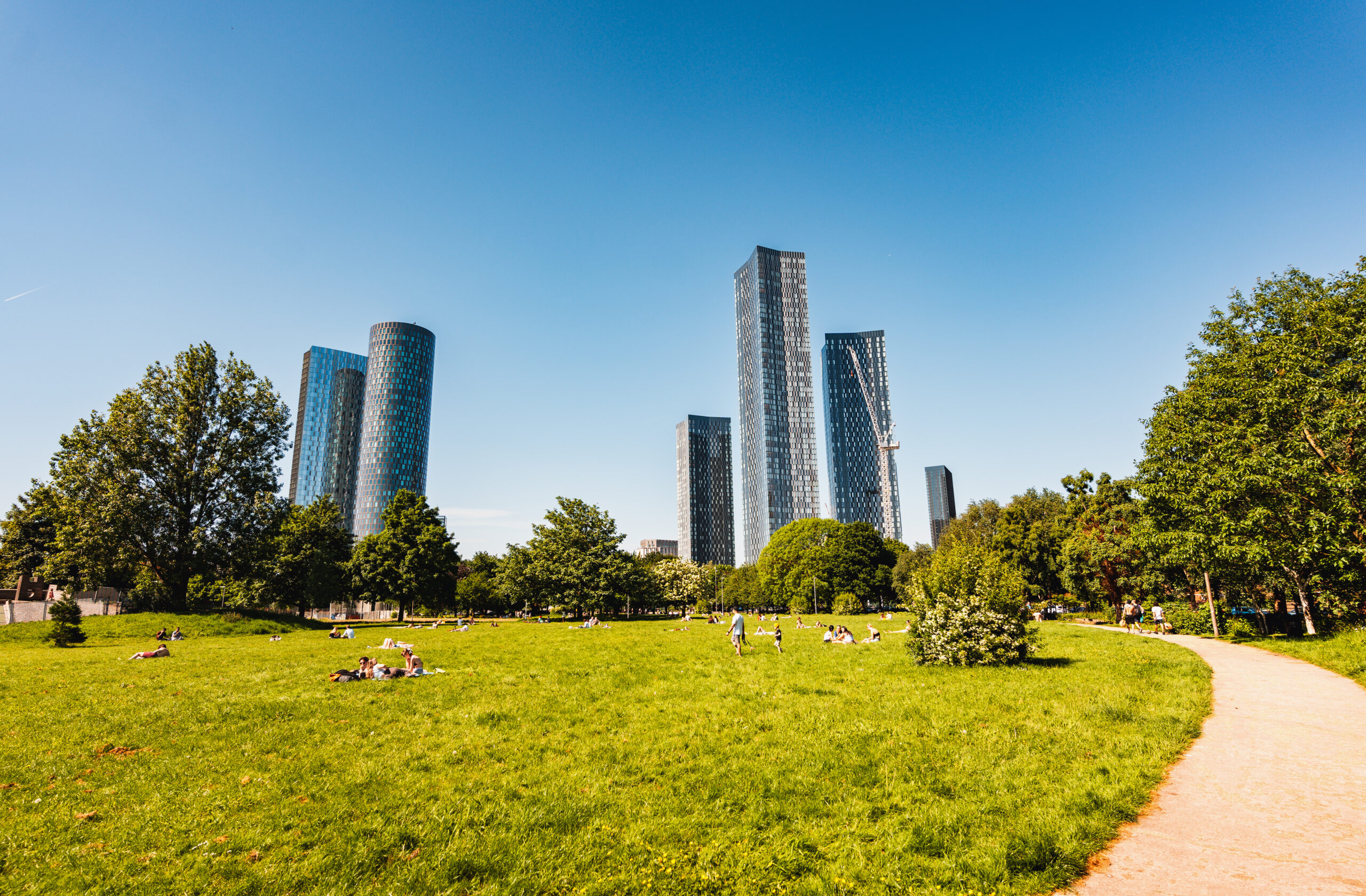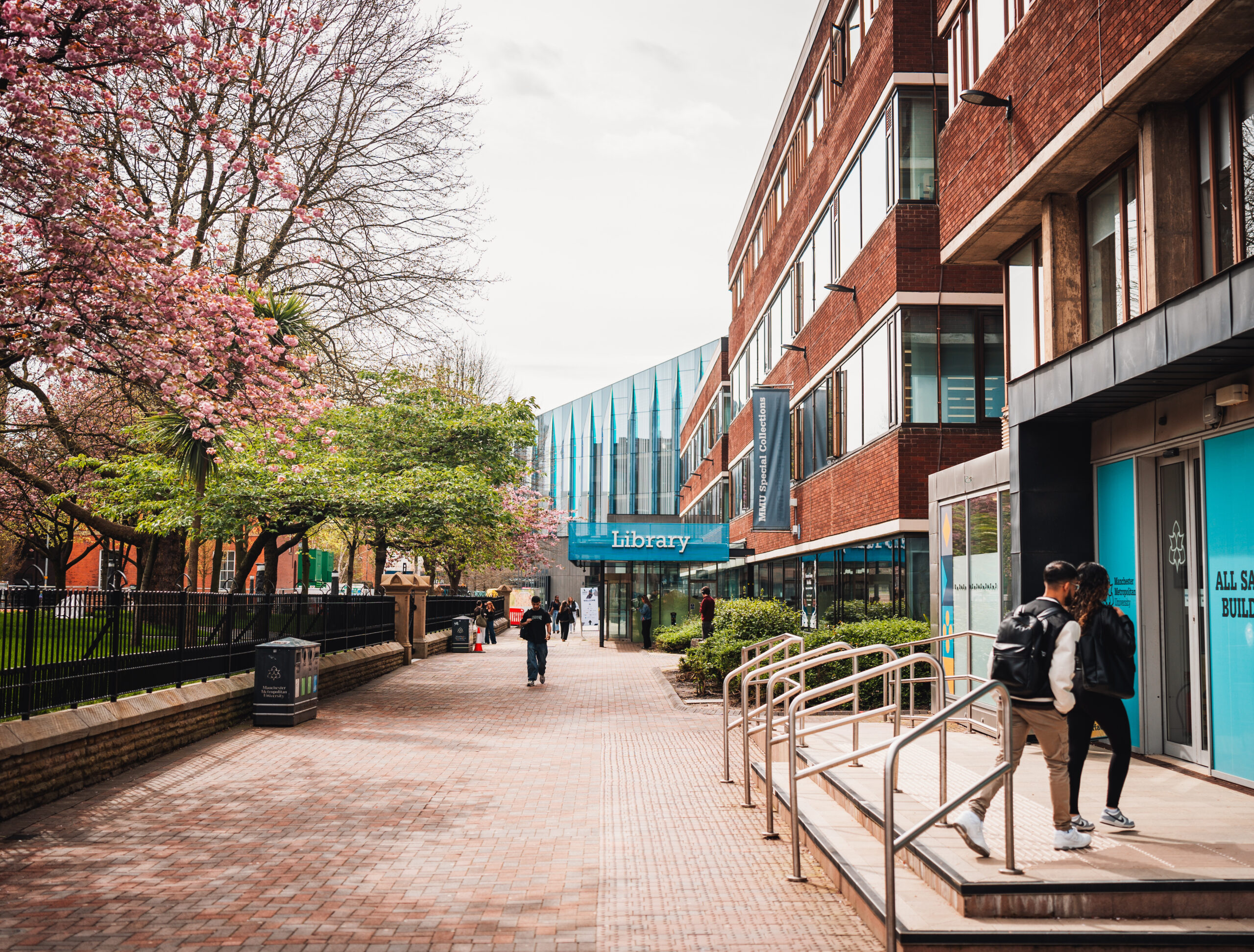Post the RHS Urban Show and in celebration of The Manchester Flower Festival, explore the city’s central green spaces.
Parks, pocket parks, old parks, new parks and gardens that were graveyards. Canals, wharfsides, rivers and rivers that become canals. There’s a lot to enjoy with the ‘green’ and ‘blue’ assets (to use the jargon) of central Manchester and Salford.
Variety is the spice of life dictated by the way the city grew and its infrastructure needs. For a city 35 miles from the sea there is a lot of water. Rivers you’d expect, but miles and miles of canal add a distinctive element to the urban scene. Rivers and canals feature in many of our chosen areas.
What must be remembered about the city is the distinctive way it grew; first and foremost as an industrial city with commerce chivvying things along. The development speed astonished all commentators, nationally and internationally, as acre after acre of land filled with factories, warehouses and mainly working class housing.
So, it’s a curious thing on this map that there is only one nineteenth century planned park or green space, Peel Park. All the rest are either adaptations from redundant graveyards or date from the last 25 years or so.
What just about all of them share is a backstory with great significance. It makes them all the more enjoyable.
Manchester Green Spaces Trail
1 – Cotton Field Park
This park began life in 2002 as part of an ambitious £200m ‘Millennium Village’ project for New Islington. It sits alongside the first new canal arm built in the city since the Manchester Ship Canal was completed more than 100 years earlier.
The park and the canal work in tandem and include a pine-crowned ‘garden island’ and large numbers of frisky Canada Geese. The Cotton Field canal arm also features a marina with house and leisure boats. There are some fine indie places for food and drink on the eastern side.
A fun element is to cross the hefty three-way New Islington footbridge which opens off Redhill Street, walk a few paces and look under the bridge to its shadow. If you catch the light just right then reflected on the water you might see the words CAST NO SHADOW. This riffs amongst the ripples on the Oasis song of the same name as a nod to the city’s musical legacy: the joke, of course, being the bridge does cast a shadow.
2 – Mayfield Park
This is 6.5 acres of freshly minted loveliness which opened in 2022 on what was one of the most industrialised sites in the world. Some of the massive girders which culverted the river and held up the factories have been re-used as ornamental features.
The winding River Medlock adds a special magic: look out for 30cm long brown trout in the river, the best place to spot them is under the Baring Street bridge close to the entrance of the park. You might even spot a kingfisher; seemingly incongruous in this still intensely urban environment between a motorway and a 1910 railway warehouse, now a leisure facility.
The park designers, Studio Egret West, have done a remarkable job, one which includes a large playground straddling the river designed by Massey & Harris. These are the stats: 120,000 plants brought in, 140 trees spread across 58 species, 70 metres of the River Medlock unculverted, 230 square metres of rain gardens, 2,400 square metres of wildflower meadow and around 2,100 square metres of lawn.
3 – Sackville Gardens & Kampus
Sackville Gardens was originally named Whitworth Gardens in honour of engineer and philanthropist Joseph Whitworth. There’s a lot of Mr Whitworth in Manchester. His generosity and that of his trustees, provided the mighty former college building across from Sackville Gardens and his eponymous street. His money also provided Whitworth Hall at the University and Whitworth Art Gallery and Whitworth Park amongst others.
Sackville Gardens lies in the Gay Village. This is marked by the seated statue of Alan Turing holding an apple by Glyn Hughes from 2001. Turing’s work influenced so much of the digital world in which we live. His Turing Test remains the test for AI. Turing was gay and convicted of homosexuality in 1952 when it was illegal for males. He committed suicide (some people dispute this) during his time at Manchester University by eating a cyanide injected apple in 1954 for, again, disputed reasons.
The Gardens, which is a focus for many Pride events in August, also has the Beacon of Hope sculpture by Warren Chapman and Jess Byrne from 1997 in commemoration of HIV and AIDs victims. It’s northern edge hugs the Rochdale Canal.
A very short walk away is the lovely Kampus garden, tiny and surrounded on three sides by apartments and food and drink businesses, the fourth side again fronts Rochdale Canal. The garden site is a filled canal arm and has an almost tropical atmosphere. Worth seeking out.
4 – Bridgewater Hall canalside
Image: Carl Sudonik
This is a sweet little space down the steps and ramps from the Bridgewater Hall; the 2,355 capacity home of Manchester’s Hallé Orchestra and host to a series of events and productions.
In 1839 the Manchester and Salford Junction Canal was opened but over the years was filled in and covered. The Bridgewater Hall opened in 1996 and part of the scheme was to create a watery area beneath it on the site of the canal.
Now landscaped and complete with a fountain and reed islands for waterfowl, the stairs, the nearby bar and the seating make for an excellent traffic-free if a tres petit retreat.
5 – Castlefield and Castlefield Viaduct
Image Credit: Castlefield Viaduct
This is where Manchester started and a place that deserves a good wander by canals and past the elegant landscaping from Castlefield Estates.The city-owned Roman Gardens, just off Liverpool Road, between the Oxnoble and White Lion pubs, contains a reconstruction of the north gate of the Roman fort, plus some foundations and a couple of ditches to the exact dimensions of the ones that protected the fort. The first record of any settlement in Manchester is when the Romans arrived in AD79. The clue to the Roman settlement lies in the name, anywhere in Britain with ‘chester’, ‘caster’, ‘cester’ as an element in its name comes from the Latin ‘castrum’ meaning fort.
Through the Roman gate, turn right and you come to another mini-green area with a reconstruction of the western wall and more lawned ditches. Above the Roman Gardens, accessed by the nearby staircase or the nearby lift, is the National Trust’s Castlefield Viaduct scheme. This remarkable ‘garden in the sky’ occupies an epic 1890s steel viaduct brought leaping into life with a series of themed jewel-like gardens from community groups.
The viaduct, under which many scenes of Peaky Blinders were filmed, is free to visit and provides fine views of the city and its rapidly growing skyline.
6 – St John’s Gardens
This pocket park starts a theme for us: death. Five inclusions on this trail sit above former graveyards. The reason is Manchester grew so rapidly through industrialisation and commerce it omitted to build many public gardens. So when churches became redundant, as demographics shifted, they were demolished, soil brought in, graves covered and gardens created.
This is the prettiest of those former graveyards turned gardens with flower beds and lawns and some good mature trees including two Manchester Poplars on the south western side. It’s incredibly rare for any species of tree to be named after a particular city. In this case the tree was cultivated to be resistant to Manchester’s once very smoky industrial atmosphere, hence the name.
St John’s church was finished in 1769 and demolished 1931. Interred under the gardens are characters such as 67-year-old Thomas Raspo of Withington, ‘a Frenchman, buried on 23 January 1824 who was clever enough to keep a wife and a concubine in the same house’. There’s also Lavinia Robinson, the ‘Manchester Ophelia’ who provides the city with one of its best ghost stories.
John Owens lies here, who left money for the founding of a non-denominational university. This opened in 1851 and is the principal ancestor of the 25 Nobel prize-winning University of Manchester. Only Owen’s gravestone remains.
Even William Marsden who campaigned for the half-day holiday on a Saturday and gave working people some respite from endless drudgery has lost his monument, although he’s mentioned on the memorial cross.
7 – Parsonage Gardens
This is a sweet oasis off Deansgate and again a former graveyard, the churchyard wall still surrounds the garden and there’s remains of some of the original ironwork.
Parsonage Gardens once hosted St Mary’s Parsonage church. This was demolished in 1928 as the congregation had moved away.
This part of the city had long become a central business district, the church had actually closed in 1890. The lawns and benches provide a green retreat for workers and residents while the cherry tree in the centre is a treat in spring.
8 – Cathedral Gardens & Glade of Light
Cathedral Gardens lies amidst that typically bewildering mix of architectural styles which makes a walk around the city centre so entertaining. There’s the Cathedral and the Corn Exchange representing the old and the National Football Museum representing the new.
Close by is the entrance to Chetham’s School of Music and Library, buildings dating from 1421. The BDP designed green space here includes a small playground and a water feature resembling a stream following the fall of the land and beloved of paddling children. There are also soft rolling mounds, stone elements to sit upon and a great variety of trees including English oaks, horse chestnuts and pines.
A short walk away, to the right of the Cathedral as you look at it from the gardens, takes you to Manchester’s most moving green space, The Glade of Light, sitting above the River Irwell. This tranquil little garden commemorates the 22 innocent victims of the 2017 Islamicist attack on an Arianne Grande concert at Manchester Arena. The memorial is successful in delivering an air of peace and contemplation.
9 – St Michael’s Flags and Angel Meadow Park
On hot days people come along to Angel Meadow to lounge and snack and sometimes naughtily fire up tinfoil barbecues. They are mostly unaware about what lies beneath.
Now landscaped and made pretty, this is another beautified graveyard with over 30,000 dead in upper and lower areas. Part of a wall divides what was the graveyard of the demolished St Michaels church and the Angel Meadow new burial ground. Some of the memorial stones have been retained in the upper part.
In the early 2000s Tony Warren, the creator of long-running TV soap, Coronation Street, told the writer of this map he’d taken many of the names for the original series from the gravestones here. Other significant people are associated with Angel Meadow amongst them Friedrich Engels, co-author of the Communist Manifesto, and ‘matchstick man’ LS Lowry.
After closure the lower part was turned, seemingly without irony, into a ‘Recreation ground’ with goal posts. Local lad and England 1966 World Cup winner Nobby Styles played football here as a child.
10 – Greengate Gardens
Manchester and Salford have a rich history in leading reform and new radical movements. This 2023 pocket park in the Greengate area of Salford, ten minutes over the River Irwell from the Cathedral, is the site of a non-conformist chapel where in 1809 a preacher persuaded his congregation to give up meat and alcohol.
Within the site is a former graveyard with a memorial to the preacher, happily for a vegetarian, called the Reverend William Cowherd. His main disciple was Joseph Brotherton who we will encounter in Peel Park in the next entry. It’s through Cowherd and Brotherton the Vegetarian Society is still based in Manchester city centre.
The landscaping has little lawns and good planting but its handsome design reflects the rapidly developing area in the shadow of new tower blocks. There are excellent history boards.
11 – Peel Park & The Meadow
Behind Salford Museum and Art Gallery lies one of the best parks in Greater Manchester. Painted by artist LS Lowry and adored by generations this was one of a trio of parks in Manchester and Salford opened in August 1846. They were some of the first truly municipal UK parks.
Peel Park includes beautiful flower beds, a playground and a glorious walk along the River Irwell. The statue in the centre is that of the remarkable Joseph Brotherton, Salford’s first MP from 1832, Parliamentary reformer, slavery abolitionist, anti-war and anti-death penalty campaigner and a believer in free education for all.
Cross the river over the footbridge turn right and there’s another lung-expanding fresh air area contained within the great meander of the Irwell. This is an informal space and is known as ‘The Meadow’.
The mighty weir on the east side hints at former industrial use on part of the site. It was here in the early 1800s the Aurora Club met to play cricket at dawn, hence their name. The Aurora Club became the Manchester Club and then Lancashire County Cricket Club.
12 – Middlewood Locks & Aviva Studios
This is an attractive and developing linear green landscaped area along the side of the Manchester, Bolton & Bury Canal. The canal was completed in 1808 and largely used to bring coal into Salford and Manchester. The green space follows the hillside down from Oldfield Road. There is a coffee shop and a bar for refreshment and the ambition is to continue the green space by the canal all the way to the River Irwell.
For now, turn right at the Co-op store and then left and cross Trinity Way to the landscaped areas adjacent to the new £242m Aviva Studios, a flexible arts space. Manchester firm BDP have provided the excellent landscaping under the bridges.
The viaduct on the south, on the right as you cross the bridge from Middlewood Locks, is the 1830 Stephenson Viaduct and one of the oldest railway viaducts in the world. It’s built of three types of stone as supplying quarries kept running out.
The stepped area on the Salford (western) side of the river has entertaining typeface carved into the walls showing how transport has developed. You can walk west along the river from here to the Quays.
13 – Ordsall Hall & gardens
One of the most unexpected sites in Greater Manchester is the western side of Ordsall Hall, a vision of ‘Merrie England’, a sort of medieval fable, parts of which date back almost 700 years. You encounter all this inside a typical UK housing estate which provides a glorious counterpoint.
A visit inside is a must and it’s free. The garden surrounding the Hall has been designed by Jo Green and her team of volunteers with formal areas such as the Tudor knot garden, but there’s also the open lawn area and a ‘Physic Garden’ for medicinal plants.
There’s an orchard too and loads of garden events throughout the year. It’s a beautiful spot.
14 – Hulme Park & Deansgate Square
This dates from 2000 and is an informal park with play areas and a skate park. You’ll also find an artwork in the shape of a Rolls Royce radiator grill as it was here on long gone Cook Street that Frederick Henry Royce created his first car in 1904.
The area alongside Stretford Road has some interesting panels telling the story of Hulme set into the paving. When the park first opened some Manchester mystics said three important ley lines met here and declared it the World’s First UFO landing pad. No aliens have landed as yet, or maybe they’re just very small.
If you cross over Royce Road which runs through the centre of the park and then cross Jackson’s Crescent you’ll find a footbridge over the Mancunian Way.
Cross over the bridge and turn right and you’ll come to the hard landscaping over the River Medlock in the shadow of the tallest skyscrapers outside London, Deangate Square. The landscaping is excellent and the whole area impressively twenty-first century.
15 – All Saints Garden
This is another former graveyard, this time for All Saints church. The recently renovated garden here hosts thousands of sleeping people under the lovely trees and flower beds.
All Saints is a little different from some of the over graveyard gardens as the church, the outline of which can be seen in the centre of the space, wasn’t demolished in peacetime but was bombed and destroyed in World War II during the ‘Christmas blitz’ of 1940. The garden is now a lovely space in the heart of Manchester Metropolitan University.
16 – Brunswick Park & University Green
Opposite the main old block of the University of Manchester is a new park, Brunswick Park. It was designed by Planit IE and opened in 2018. It’s a clever design idea shifting the alignment of a former street so the main pedestrianised hard-surfacing now aligns with the arch of the 19th century university building by Alfred Waterhouse (Manchester Town Hall architect).
A little further into the city centre along Oxford Road there is University Green with its bookshop and its food and drink establishments. These places are delightful on sunny days, alive with the energy of university life.
The Manchester Green Spaces Trail is free to download as a map
Print copies will be available to pick-up at The Manchester Flower Festival (24th-27th May)
Author
The Manchester Green Spaces Trail is written by Jonathan Schofield.
Jonathan is a tour guide, writer, public speaker, and broadcaster. He is a registered Blue Badge Guide, Editor of Manchester Books Ltdand Editor-at-Large of Manchester Confidential.
Book a city tour at jonathanschofieldtours.com
Design
The Manchester Green Spaces Trail, Manchester Music Trail and Manchester LGBTQ+ Trail are designed by Instruct Studio.
Commissioned by
The Manchester Flower Festival (24th-27th May 2024)
Join us at this year’s event, which again transform Manchester city centre with floral displays, outdoor eating, drinking and live music.
Announcements at mcrflowerfest.com


